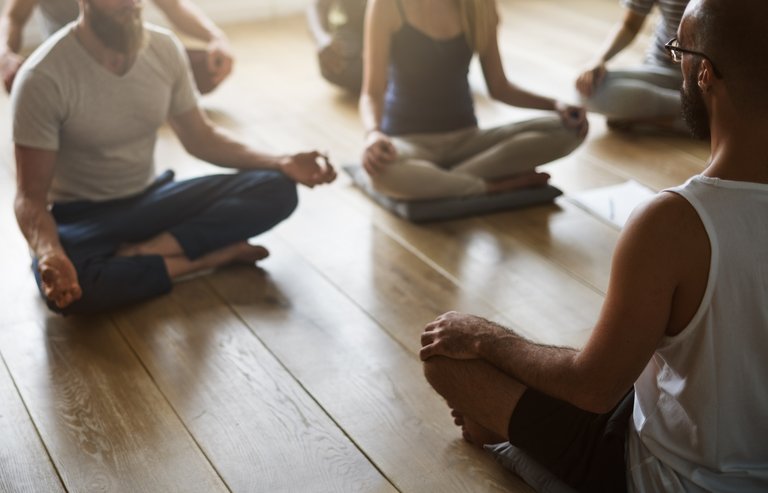How to Treat Chronic Pain with Yoga
Chronic pain can be uncomfortable at best and immobilizing at worst. To really treat chronic pain, a correct diagnosis and holistic approaches are in order—and oftentimes, yoga is recommended by healthcare practitioners in all fields. From general physicians to physical therapists, the practice of yoga is deeply integrated within a wellness regimen.

Yoga is also a fantastic alternative to help patients avoid painkiller abuse. Painkillers, such as opioids, are highly addictive and dangerous. These painkillers are often designed for short-term use while being carefully monitored by a doctor. For instance, a prescription for painkillers might be appropriate for someone recovering from surgery. This type of pain is acute and short-term. Chronic pain may be an issue that is handled for life, which makes painkillers not a good option. Even over the counter painkillers, such as Advil, are linked to adverse side effects when used in excess.
How does yoga work in treating chronic pain? It's a lot more than the asanas, or postures you might be familiar with in a local studio. Yoga actually means "to yoke," or "union," in Sanskrit. There are spiritual angles which you may or may not be interested in exploring, but it's also a practice that involves the head and heart as well as the body. Incorporating meditation into asana practice gives you a one-two punch when it comes to tackling chronic pain.

Here are a few ways to begin incorporating yoga into your daily life to treat chronic pain. However, keep in mind that no exercise practice should be started for those being treated by a doctor unless their physician approves it. Yoga is also best practiced with a skilled teacher, especially in the beginning. Otherwise, you might put your health at risk:
Try various styles of yoga and find what feels good for you. There are many styles, and every teacher also has their own techniques. From restorative yoga (great for many with chronic pain) to vinyasa and Ashtanga, the only way to find out what feels right for you is to give them a try. Fortunately, many studios offer a tester class or you can check out a month of classes with an introductory fee.
The art of vinyasa can help keep your mind off of pain. Vinyasa is the linking of breath to movement. Not only are you moving your body and working out kinks that might contribute to chronic pain, but you're also arming yourself with a tool that can help keep your mind from drifting.
Choose a mantra for meditation that resonates with you. There are countless ways to meditate, from candle gazing to mala meditation with japa beads. Both of these examples are common, but the latter especially so in guided meditation classes. With mala meditation, you chant a mantra (audibly or not) while counting each repetition on a string of 108 beads. Mantras might be offered, but you can also choose your own to repeat internally. Asking the pain to leave in whatever language feels right to you is a great way to encourage your body to heal.

Learn new ways of moving. Restorative yoga classes use many props to help you achieve comfort in your body. Talk with the instructor before class to let them know what’s troubling you and what you’d like to gain. However, in all yoga classes you will learn new ways of movement and be able to explore options for activities of daily living that minimize pain.
Better your posture. Sometimes chronic pain is caused by, and often exacerbated by, poor posture. Everyone is guilty of it, especially in an era when many of us are crouched over screens all day. Yoga helps remind your body what proper, healthy posture feels like so you can start building it into your day.
Lengthen and loosen muscles. Chronic pain can also be caused by or increased by tight muscles. If muscles aren’t regularly stretched and lengthened, they can “bunch up” and cause pain throughout the body. Many muscles are so deep and/or so infrequently used that they’ve atrophied. Yoga can help correct this.
The most important part of yoga is simply getting to the mat. Showing up can be hard, but in a group setting and with a teacher you trust, it can be an integral part of pain management.
Congratulations @meditationtalks! You have received a personal award!
Click on the badge to view your Board of Honor.